London - A World-Leading Sustainable Metropolis
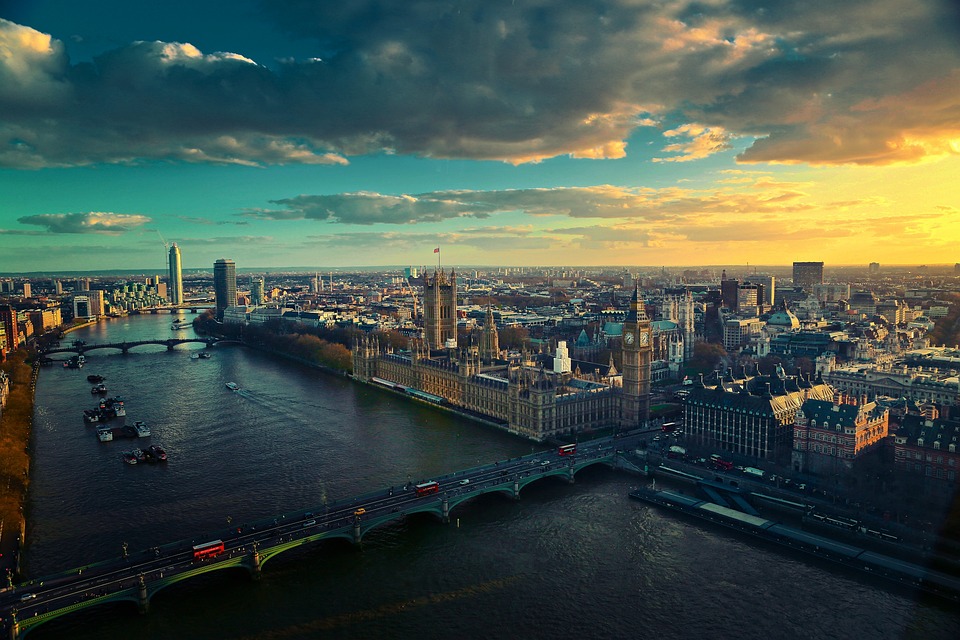
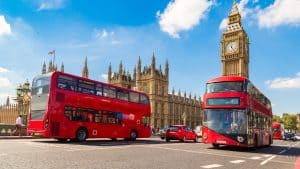
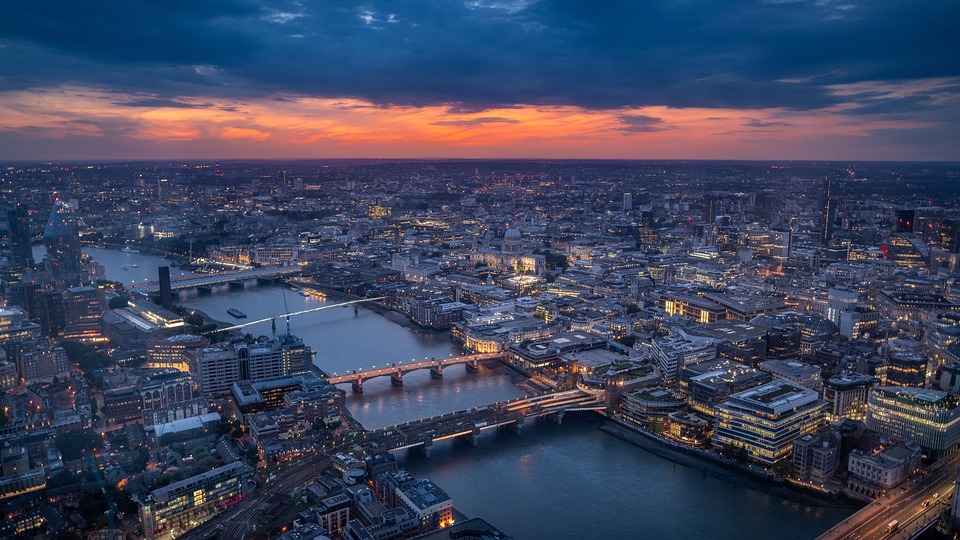
Green City: London
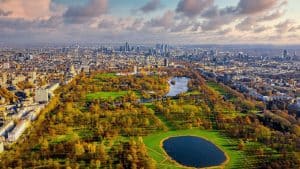
The Greater London urban area has over 35,000 acres of public green spaces, including over 3000 parks.
Around 40% of the entire Greater London area consists of parks and green spaces.
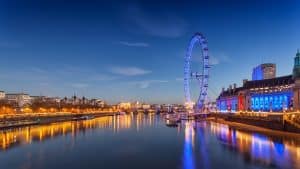
In addition, London is a global leader in renewable energy, energy efficiency, and sustainable mass transit - the three pillars of the city's net zero plan.
The Mayor of London has set a revised, more ambitious target of net zero carbon emissions by 2030 (the old target date was 2050).
"[in March 2021] the Mayor of London, Sadiq Khan, launched an ambitious new programme [The Business Climate Challenge]...to help achieve London’s target of reaching net zero carbon by 2030."
[QUOTE FROM - london.gov.uk/businesses-to-cut-carbon]
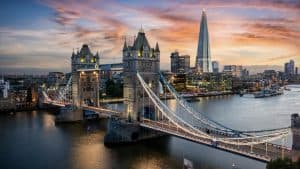
The UK government has set a goal for the entire country to reduce greenhouse gas emissions (GHGs) by 78% by 2035 compared to 1990 levels, including emissions from aviation and shipping.
To achieve the ambitious net zero and GHG reduction goals, London is engaged in ambitious energy efficiency and renewable energy strategies. London boasts one of the greatest sustainable mass public transportation networks in the world. London is also a world leader in green buildings.
“London’s positive climate leadership ranking recognises the Mayor’s commitments to take action on the climate... London was one of the first global cities to publish a 1.5 degree compatible plan, in line with the Paris Agreement, to put us on a pathway to zero-carbon. Sadiq will continue working towards making London zero-carbon..."
[QUOTE BY Shirley Rodrigues, Deputy Mayor of Environment and Energy at the Greater London Authority]
Green Building, Clean Energy, and Energy Efficiency in London
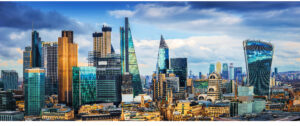
London is considered one of the top cities in the world for green buildings.
The United Kingdom was the first country in the world to introduce a sustainability assessment system for buildings (in 1990) - Building Research Establishment's Environmental Assessment Method (BREEAM).
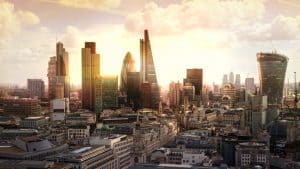
London is a green building leader in large part due to their focus on developing energy-efficient buildings, such as BREEAM buildings.
The following quote is about the Energy for Londoners program, which...
"...aims to make London’s homes warm, healthy and affordable, its workplaces more energy efficient, and to supply the capital with more local clean energy...[clean energy] and energy efficiency projects [include]:
Warmer Homes – ...grant funding for heating and insulation measures that will improve the energy efficiency of...Londoners...
Retrofit Accelerator – the Mayor’s award-winning programme to help make London’s homes more energy efficient, reducing both energy bills and carbon emissions.
Energy Leap– testing innovative ways to reduce grid energy consumption to near zero through whole-house ‘eco-refurbishments’. The pilot scheme will give up to ten homes a radical makeover involving off-site manufactured insulation panels, solar panels, heat pumps, and other measures.
London Power – the Mayor recently launched London Power: a landmark fair-priced, green energy company, available exclusively to Londoners to cut fuel bills and help make the capital a zero-carbon city."

Greater London Authority planning policies require energy developments to consider: 1) connecting to local district heating networks, 2) installing their own combined heat and power (CHP), and 3) meeting 20% of the relevant site's energy demand from renewable energy sources.
District heating, CHP, and on-site renewable energy are all ultimately ways to improve energy efficiency.
Goals for London to achieve net zero by 2030 also include:
"- a nearly 40 percent reduction in the total heat demand of our buildings, requiring over 2 million homes and a quarter of a million non-domestic buildings to become properly insulated
- 2.2 million heat pumps in operation in London by 2030
- 460,000 buildings connected to district heating networks by 2030"
[QUOTE FROM - london.gov.uk/zero-carbon-london/pathways-net-zero-carbon-2030]
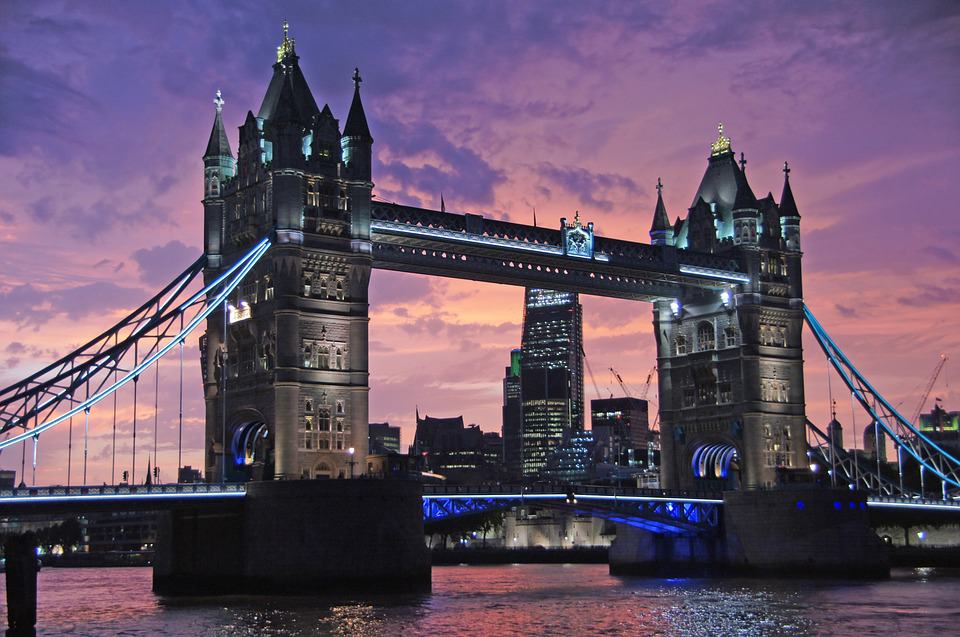
London recognizes the importance of new clean energy and energy efficiency technology in contributing towards its carbon emission reduction goals. London has set a target of supplying 25% of London’s energy from decentralized energy (renewable energy, CHP) by 2025.
Currently, London sets many of its clean energy goals through its London Sustainable Development Commission.
The London Sustainable Development Commission has been working to make London sustainable since 2002. In 2002, they drew up "...London's first Sustainable Development Framework...", as well as helping to draft "...the first ever London Plan, the capital's spatial development strategy covering everyday issues such as transport and land use, through to wider concerns such as climate change..." [QUOTE FROM - london.gov.uk/london-sustainable-development-commission]
London's C-charge and ULEZ
Sustainability measures such as London's congestion charge (C-charge) zone and ultra-low emission zone (ULEZ) work to encourage the use of electric vehicles (EVs) and dissuade driving of tailpipe-emitting internal combustion engine (ICE) vehicles.
The C-charge and ULEZ also help to support cyclists and pedestrians, and encourage the use of sustainable public transit. In addition to the C-charge and ULEZ, almost all of Greater London is now a low-emission zone (applying to older, more polluting ICE vehicles).
Low-emission zones help to reduce traffic in general, reducing GHGs and other tailpipe-related pollution in the city. The C-charge zone and ULEZ both encourage highly efficient vehicles and zero-emission vehicles, as opposed to imposing an outright ICE vehicle ban.

In order to encourage alternative cleaner forms of transit, and discourage excessive polluting ICE vehicle use, there is a levy imposed on vehicles entering Central London (the C-charge, implemented in 2003).
Separately, there's also a ULEZ levy (now covering an area of almost 4 million London residents) for polluting ICE vehicles that do not meet Euro IV standards (for petrol-fueled vehicles). The ULEZ levy also applies to diesel vehicles that do not meet Euro VI standards.
The C-charge levy starts at £15 (as of 2023, and with the June 2020 increase in the levy amount made permanent) and can be paid online, or vehicle owners who don't pay the fee may face a fine of £160 (with a 50% discount if paid within 14 days).
The ULEZ applies at all times, year-round, and starts at £12.50. Non-compliant vehicle owners face similar fees as with the C-charge, although fees can run much higher in London's ULEZ the less efficient the non-compliant vehicle is.
The ULEZ has expanded and now applies to a larger area of London's roads than the C-charge; and is an effective means to limit ICE vehicle use in London to a majority of efficient vehicles (vehicles that pass Euro IV/ Euro VI emission standards, depending on whether the vehicle runs on petrol or diesel).
London's C-charge applies to vehicles entering central London during daytime hours. The C-charge zone began as a daytime weekday measure (7 am - 6 pm) but has since expanded to year-round (except Christmas Day through the observed New Year's Day holiday) from 7 am - 6 pm on weekdays and 12 pm - 6 pm on weekends.
ULEZ applies 24 hours per day, 7 days per week, 365 days per year (except Christmas Day).
In London's low-emission zones - less efficient ICE vehicle owners face additional fees (if vehicle owners fail to pay the appropriate levy, and for ICE vehicles that don't meet strict emissions standards).
As a result of these measures, over 95% of vehicles in Central London are ULEZ compliant, conforming to the city's strict emissions standards.
 Zero-emission vehicles qualify for a 100% discounted C-charge.
Zero-emission vehicles qualify for a 100% discounted C-charge.
Fully electric vehicles qualify for this exemption to C-charge levies (it costs £10 each year to apply for and to renew the Cleaner Vehicle Discount, and qualify for the exemption).
EVs are also permitted to use London's ULEZ without facing the added charge that owners of less fuel-efficient ICE vehicles face.
"By switching to a zero emission capable vehicle, people who drive in London can save money on fuel costs, reduce harmful vehicle emissions, and help clean up London’s air. Those attributes are being foregrounded by Transport for London. So, too, are the associated financial benefits.
Zero emission vehicles that meet the criteria are eligible for a 100% discount on the Congestion Charge.
The Government offers grants for new plug-in vehicles, currently up to £2,500 for cars, £1,500 for motorcycles, £6,000 for vans, £7,500 for taxis and £16,000 for trucks.
Zero emission-capable vehicles pay either no vehicle tax (VED) or a reduced rate depending on their CO2 emissions, vehicle list price and year of registration.
There is a range of tax incentives for business users.
Some London boroughs offer free or reduced-charge parking for electric vehicles."
[QUOTE FROM - cleantechnica.com/london-transportation-fees-ev-adoption-an-equation-to-lower-air-pollution]
Heavy-duty vehicles using London's ULEZ must pass Euro VI emissions standards or pay a daily charge of up to £300.
"The Low Emission Zone was set up to encourage the most polluting heavy diesel vehicles driving in the capital to become cleaner. It covers most of London and operates 24 hours a day, every day of the year. The tougher LEZ is already having an impact, with new data from City Hall showing compliance with the new standards is nearly at 90% [over 95% as of October 2023].
TfL announced that their entire 9,000-strong core bus fleet complies with the LEZ standards, and now meets or exceeds the cleanest Euro VI emissions standards."
[QUOTE FROM - london.gov.uk/new-tighter-lez-standards-for-hgvs-in-london]
Results of London's C-charge and ULEZ
As a result of London's C-charge and ULEZ, there are fewer automobiles in Central London, more bus journeys, more travel by cycling; as well as an increase in transit via simply walking. Such a mandate does come with its skeptics, however, the ratio of Londoners in support of the congestion charge to the skeptics has consistently been around 1-to-1.
London's C-charge and ULEZ are examples of the kind of solutions that will produce the paradigm shift needed to reduce our global dependence on fossil fuels. There continue to be significantly reduced tailpipe GHGs in London, as over 95% of cars in central London now meet the ULEZ standards, and citywide compliance with the ULEZ standards has continued to grow.
The revenue from London's congestion charge goes to fund the city's public transit, road improvements, and related transit infrastructure.
Between 2003 and 2019, London's C-charge raised over £2 billion (around £150 million per year) for road maintenance, sustainable mass transit projects, and street improvements (like widening bike lanes and creating car-free pedestrian/ market zones). TfL says that, due to the ULEZ, the new number of efficient, compliant cars in London is over 95% as of October 2023, even with the ULEZ expansion.
"In the first year of congestion charging alone, London enjoyed a 30% reduction in traffic congestion and a 30% increase in average speeds, while bus passenger numbers increased by 38%. The charge has generated over £2 billion in revenue since 2003 [as of the article date, March 2019] – around £150 million per year, and rising.
All of this revenue has been reinvested into London’s transport infrastructure. Turning over road space to other users has created a more efficient transport system that can accommodate more people.
...more people are using public transport and cycling than ever before, and the number of trips made by car continues to decline. The Congestion Charge has helped London to achieve a transport mode shift – since 2002, the percentage of trips made by private car has reduced from 46% to 36%, while public transport has increased from 29% to 37%, and a further 27% of journeys in London are made by walking or cycling.
London’s goal is that 80% of all trips in the city will be made by walking, cycling or public transit..."
[QUOTE FROM - c40knowledgehub.org/How-road-pricing-is-transforming-London-and-what-your-city-can-learn]
Even more ambitious than the C-charge zone and ULEZ, London is introducing internal combustion engine vehicle-free zones in select parts of the city center (discussed below).
Additionally, the Mayor of London and Transport for London (TfL) are working on redesigning some parts of city center districts into entirely pedestrian and bicycle-only zones.
Major streets in London's city center have started banning ICE vehicles (as seen in this quote from the World Economic Forum about one such street):
"A street in the heart of London’s financial district has banned petrol and diesel vehicles.
The aim is to bring nitrogen dioxide levels within guideline limits.
The 18-month trial will be used to consider similar plans for other streets.
Air pollution is the biggest environmental threat to health in the UK, according to Public Health England.
One London street is taking extreme action against air pollution by banning all petrol and diesel cars. Beech Street, in the heart of London’s financial district, will be restricted to zero-emission vehicles, cyclists, and pedestrians by spring 2020, with exceptions made for emergency vehicles, access to car parks and for refuse collection and deliveries.
The road, much of which runs underneath a housing estate, will participate in an initial trial for 18 months, while air quality and traffic are monitored."
[QUOTE FROM - weforum.org/britain-london-air-quality-zero-emissions-street-ban-petrol-diesel-cars-electric]
Sustainable Mass Transit in London

London's Bus System
London has one of the largest bus systems in Europe, with Transport for London (TfL) running around 9,000 buses, 24 hours a day, and serving over 6 million passengers on weekdays.
London has invested in diesel-electric hybrid buses, which deliver around 40% CO2 reduction; along with a few other types of alternative fuel buses now serving London.
Already, around half of the buses in London either run on biofuel-diesel blends, are hybrid diesel-electric, or are 100% electric. Most biofuel buses in London run on biodiesel blends, specifically, as opposed to bioethanol-petrol blended fuels.
"...all new double-deck buses will be hybrid, electric, or hydrogen, to focus on only buying the greenest, cleanest buses. In central London, all double-deck buses will be hybrid as of 2019 and all single-deck buses will emit zero exhaust emissions by 2020. By 2037 at the latest, all...buses across London will be zero emission."
[QUOTE FROM - london.gov.uk/pollution-and-air-quality/cleaner-buses]
"All of TfL's 9,000 buses now meet or exceed the cleanest Euro VI emissions standards. Around 4,000 London buses have been retrofitted to reduce harmful nitrogen oxide levels by an average of 90 per cent. And TfL is now to focus on growing its zero-emission bus network.
More than 400 all-electric buses have been introduced so far. And around 300 additional zero-emission buses are expected to join the fleet by the end of this year. There are plans for 2,000 all-electric buses to be in operation by 2025."
[QUOTE FROM - sustainable-bus.com/news/transport-for-london-ulez-standard-electric-buses]
Rail in London
London is home to many heavy rail lines running through the over 300 stations (for heavy rail passenger trains) of various sizes in and around Greater London.
There are also many sustainable subway, commuter rail, light rail, rail rapid transit, and high-speed rail services, with a multitude of stations in London. London's rail services connect many of the city's areas and connect London to the rest of England, and beyond.
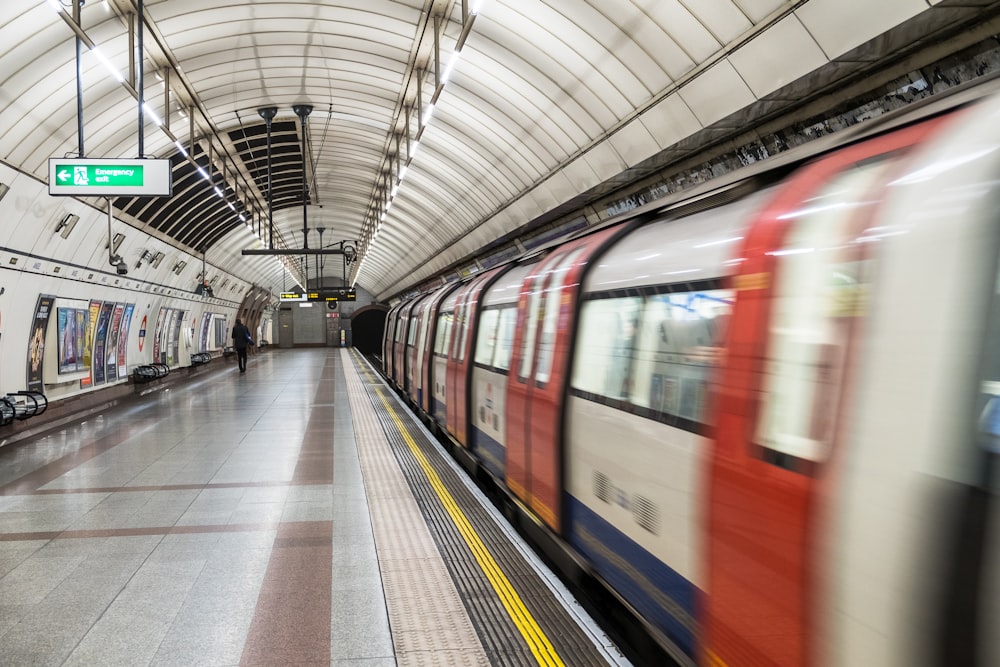
The London Underground rail network (known as The Tube, and operated by TfL) is a light rail rapid transit system and is one of the most used subway systems in all of Europe.
The Tube is focused more in North London, features ≈ 250 miles of tracks, has 11 lines, and serves up to 5 million passengers/ day. Tube hours are 5 am to midnight Monday-Saturday, with slightly reduced hours on Sunday. Some lines feature a Night Tube (Fridays and Saturday nights).
TfL operates 9 lines of local suburban commuter trains - London's Overground system. London Overground is a network of commuter trains forming part of the United Kingdom's National Rail network but is under the control of TfL.
TfL also provides services such as the Elizabeth Rail line which connects central London to London suburbs.
In addition, TfL operates London Trams - light rail tram systems focused on areas more in South London with frequent, easily accessible services. The Docklands Light Railway (DLR), an automated light rail system, is focused more on East London.
High-speed rail in London
Sustainable rail modes in London include high-speed rail lines in addition to the commuter rail and light rail lines. High-speed rail is usually defined as at least 124 mph/ 200 kph.
London's high-speed domestic rail lines include the (partly electrified) Midland Main Line and the West Coast Main Line. Both lines run from London to major cities throughout England, and each runs almost 400 miles/ 640 km. Nearly all of the West Coast Main Line is now electrified.
The Great Western Main Line (serving London to Bristol) is yet another nearly 400 mile/ 640 km long high-speed domestic service and a mostly electrified railway. The East Coast Main Line (393 miles/ 632 km) high-speed rail line is fully electrified, originating at London King’s Cross, and providing commuter routes locally, as well as providing long-distance railway services.
The four domestic high-speed lines mentioned above can travel at speeds of 125 mph/ 201 kph, all with routes from London.
London's sustainable domestic transit modes - the Tube, London Trams, the DLR, and substantial sections of the domestic high-speed and commuter rail lines running through London - are electrified. These rail lines are great eco-friendly options for traveling around the UK.
London is also home to some international high-speed rail lines - fully electric, sustainable, eco-friendly options for transit to different European countries.
There's an electric high-speed railway linking London to the Channel Tunnel (the Chunnel, which connects the United Kingdom and France). High Speed 1 (HS1) connects London St Pancras International railway station to the Chunnel.
HS2 is a planned zero carbon electric high-speed rail service scheduled to open for full operation in the next decade. HS2 plans to further connect London, major cities in the Midlands, and Northern England, with fully sustainable high-speed railways.
International high-speed Eurostar trains run from London St Pancras to cities throughout France, Belgium, and the Netherlands.
HS1 and Eurostar train lines are electrified. The HS1 & Eurostar high-speed trains reach top speeds of ≈ 186 mph/ 300 kph. Eurostar trains slow down to below 100 mph/ 160 kph when going through the Chunnel, so are no longer considered high-speed at that time.
London River Buses

London also offers river buses (the Thames Clipper River Buses) -
"London's public transit system makes good use of the Thames River to move people through the city. The River Buses can prove to be a very enjoyable option if you would like to enjoy some great sightseeing as you move about the city.
They offer a relaxing alternative to the 'Tube' for getting around, you are guaranteed a seat, and there are washrooms on board. They also offer free Wi-Fi. The boats are lined with large windows offering a unique view of London's popular landmarks. Service is frequent and consistent."
[QUOTE FROM - tourbytransit.com/riverservices]
The London Summer Olympics were a perfect example of sustainability...
Sustainability at the 2012 London Summer Olympics
Other novel ways to reduce GHG emissions from fossil-fuel-based ICE vehicles by imposing mandates for levies on polluting vehicles, while encouraging the use of low-emitting, clean vehicles, can be found in several other world cities to date, including:
Crit'Air sets fuel efficiency standards for vehicles in Paris and cities throughout France
Oslo, Norway, is considering a complete ban on fossil-fuel ICE vehicles in the city, and also has a congestion charge